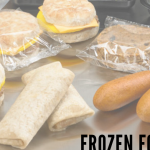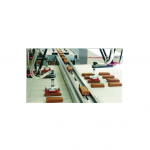Food packaging – why is it designed that way?
Have you ever found yourself struggling to open a package of crackers and wishing you could talk to the person that designed the con-founded thing? I know I have! Well, at least until I learned to appreciate all of the reasons that packages are designed the way they are. It’s mostly about food safety, food quality and marketing.
Packaging is the most important element in the consumer’s decision to purchase a new specialty food. So it has to look good, but it must also serve a practical function for the food that is in it. It should protect the food from damage and secure it’s shelf life. Shelf life is the length of time that materials in a container remain in a saleable or acceptable condition under specified conditions of storage. Depending on the product, shelf life may be dictated by the state for food safety purposes or by your marketing department for quality purposes.
There are a wide variety of materials that can be used for food packaging, including cardboard, plastic, cellophane, glass, and metal. Packaging provides a barrier for moisture, oxygen or light (or a combination of those) – as those natural deterioraters have a great deal to do with quality and shelf life. Plastics provide the widest variety of choices, as some provide more of an oxygen or moisture barrier than others. Some plastics perform a better barrier when cold or frozen. Glass can be clear or dark to affect light deterioration. Cardboard can be waxed to keep in moisture, like in your ice-cream carton or other frozen foods.
Certain materials can be placed inside of a package to extend shelf life as well, like oxygen absorbers, dessicants or antimicrobial agents, particularly when the product is moist. Moisture problems can cause changes in texture, stickiness, sogginess and premature spoilage, as well as flavor change, color change, microbial growth, enzymatic problems.
There’s a lot to consider when choosing packaging for your food product. For free expert consultation in food packaging, contact the MSU Product Center to speak with an Innovation Counselor about your needs.





